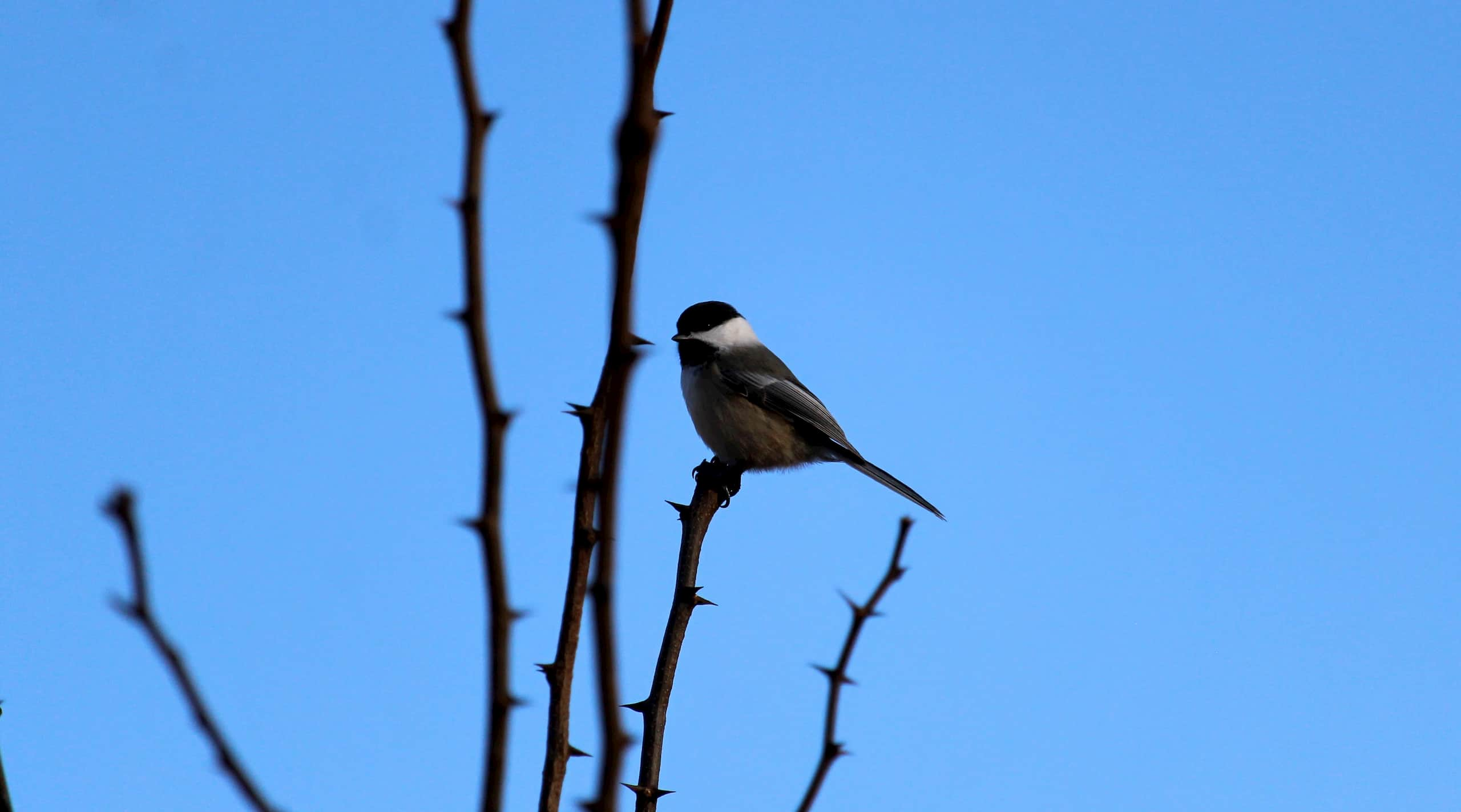
A new bird for every day of the year
Birding in 2019
Two years ago, I rediscovered one of my favorite hobbies: birdwatching. To some it may sound like a pastime for elderly adults with plenty of time, but for me it’s like a natural scavenger hunt. As a birder, visiting new places has a unique opportunity: seeing new species of birds and in 2019 my wife and I visited a lot of new countries. When we started our travels, I had no idea I would be able to identify a new bird species for every day of the year.
Getting back into birding
During our first stay in Mexico, I realized that the birds I was seeing were different than the ones I grew up with in the Northeastern US. As a child, I loved watching my backyard birds. Blue Jays were my favorite, but we had plenty of American Robins, Northern Cardinals, and American Goldfinches as well. I remember watching the Eastern Bluebirds that nested in the birdhouse in my grandpa’s back yard. I would study field guides as a kid to memorize how to identify all the local birds. At one point, I even wanted to grow up to be an Ornithologist (a scientist who studies birds). But as I went through high school and entered college, I paid less and less attention to the birds around me.
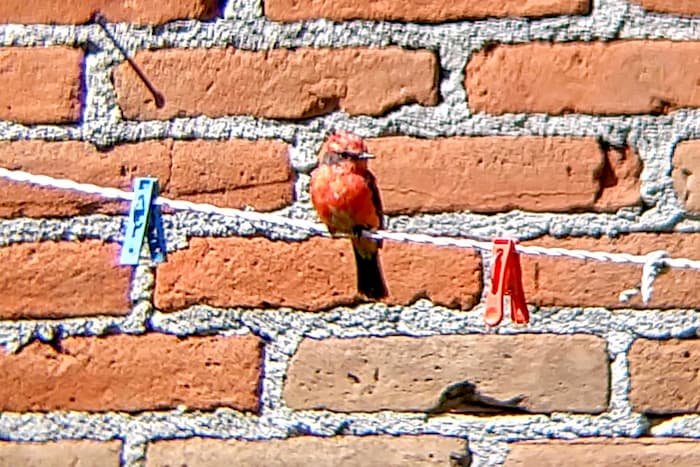
Years later in Mexico I got curious about the new birds I was seeing. The most striking was a bright red bird with black accents perched on fence-tops and wires until it acrobatically snatched bugs out of the air. To identify the bird, I downloaded the Merlin ID app from the Cornell Lab of Ornithology which can come up with a list of possible species based off of some basic information like location, date, bird size, and color. My new bird was a Vermilion Flycatcher.
After I started identifying new birds, I looked for a way to track what I’d seen. Cornell has another software project called eBird which is a system for logging bird sightings. You create lists for every time you go birding, recording the birds you’ve seen. This data feeds into a database which researchers can use for studies, but it also you to total up your bird sightings. You can see species totals on a regional level or for a time range, so as we went country to country I could see how many species I saw where and how many I saw that month.
I quickly wanted to add all the birds I had seen, including the ones I knew I had seen in the past. You can create a “historical” list which eBird will know is just for personal logs. I went through and added all the jays, finches, woodpeckers, raptors, and other birds I knew from memory I had seen in the past. I’ve even found old photos I’d taken off birds and logged those as well. This created a starting point of 35 birds I had seen in the past. But those wouldn’t count towards my 2019 total.
Birding Country by Country
Peru
It was the first country where I focused on seeing new birds and luckily Peru has some of the most bio-diversity in the world. I wrote more extensively about our Peru trip in a post last year but by visiting multiple regions and ecosystems, I was able to see a wide variety of birds. Starting in the parks and coastline of Lima I saw tiny, yellow Bananaquit and big flocks of Black Vultures. As we hiked to Lago Humantay in the mountains of Cusco we saw Andean Lapwing and Mountain Caracara. We took a day trip to the costal region of Paracas and saw Inca Tern and Chilean Flamingos. Finally, we spent some time in the hills of Cañete were we saw Peruvian Thick-Knees and Burrowing Owls running around at dusk.
Peru Stats:
- Species: 75
- Checklists: 48
- Providences: 3
Guatemala
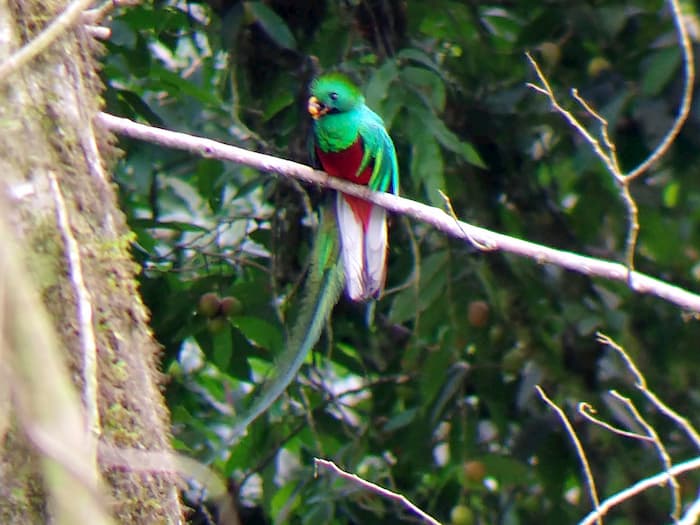
Guatemala was where I went on my first guided birding tour. I took a morning boat ride across Lago Atitlan to join a small group of tourists in the back of a pickup to see a pair of Resplendent Quetzal. We hiked through the woods, passing some large Crested Guan high in the trees to a small clearing in the forest where the pair’s nest was visible. We waited for about 40 mintutes before a guide saw the male with his long green tail feathers and the less vibrant female brought food to the nest. From there one of the guides took me on a solo hike through the jungle to find more species like the Blue-throated Motmot and Spot-crowned Woodcreaper. In the thick jungle vegetation, it was hard to locate the birds my guide was pointing at but they were all around.
Back in town, I enjoyed sitting on the rooftop terrace of our AirBnb a few times each week and learning the neighborhood birds like the family of Golden-fronted Woodpeckers in the tree across the street, the Blue-grey Tanagers chasing each other through the tree tops, and the Altamira Oriole weaving a nest on a cell tower. Though we were there less than a month, I found lots of unique jungle species. From the lack of resources online it’s clear that many animals here are under-studied and habitat loss poses a huge risk. I was glad I had the opportunity to support a local guide.
Guatemala Stats:
- Species: 68
- Checklists: 34
- Providences: 4
Costa Rica
We only stayed in Costa Rica for a short vacation, but thanks to my great birding guide I saw 68 species in one day. My guide had the day planned out based on when those birds would be most active. Leaving before dawn, we went to a spot where there was a hybrid Red-crowned x Hoffmanni woodpecker still tended by it’s mixed-species parents. We drove to a more remote portion of the forest where we walked down the road finding Spot-crowned Euphonia and Dot-winged Antwren hiding in the trees at the road’s edge. Up in the trees we saw a family of Fiery-billed Aracari which stick together and help their parents raise the next brood of chicks.
During our tour we drove to a neighborhood where hummingbirds like Purple-crowned Fairy our tour and Charming Hummingbird fed from the flowers in peoples yards. In someone’s tree lived a Ferringus Pigmie Owl (below) who was kind enough to let us take photos and video of him through my guide’s scope. As we traveled through the small town and passed the old school building, my guide explained how many of the villages no longer had enough locals to support their own schools, paralleling similar demographic changes exhibited in the US. He also shared the funny ways the townspeople responded to seeing birding groups walking around and how he’d built connections with them.
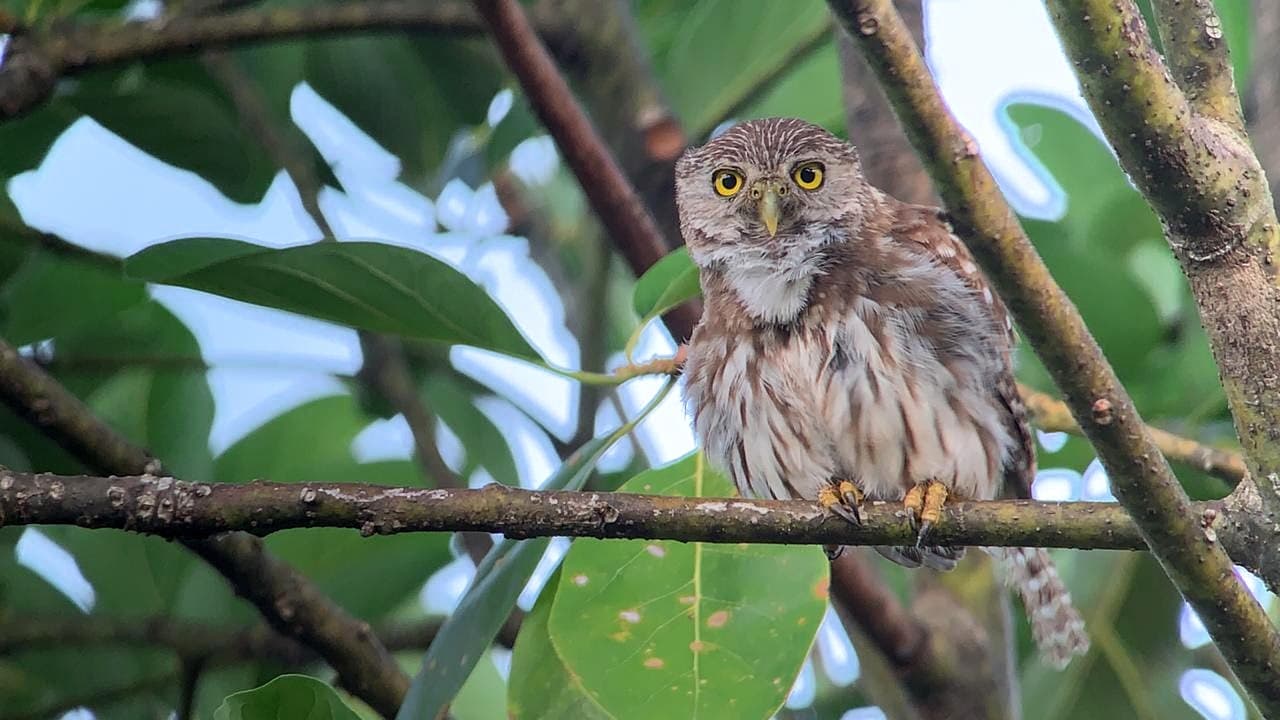
One of my favorite bird of the tour was the Baird’s Trogon which is from a family of birds I had been wanting to see for a while but which stays fairly hidden in the forest. To finish, we headed to a ridge to look for the raptors that would be floating on the hot thermals of air that were developing as we passed mid-day. During certain periods, huge groups of thousands of hawks fly through central america during their annual migration but on my tour we mostly saw resident raptors. We focused on the small dots up in the sky with our binoculars, finding mostly Black and Turkey Vultures with the occasional Swallow-tailed Kite. Then, just before we were about to head back, my guide excidedly pointed out a King Vulture, one of the largest birds in the region, to cap off a great tour.
The country’s location between the two american continents and it’s focus on eco-tourism makes it a great place for birding. We stayed at a resort which overlooked the coast and had several paths which wound their way through the trees of the grounds. Our resort also took us on a tour of the nearby national park where we saw more birds, monkeys, and sloths. Being near the nature reserve allowed me to see Scarlet Macaw which have been nearly eliminated in the wild by pet trade trapping and Yellow-throated Toucan. Getting around the country is surprisingly expensive but I highly recommend going there if you love nature.
Costa Rica Stats:
- Species: 84
- Checklists: 18
- Providences: 3
Mexico
Our first stay in Mexico, I was just starting to get into birding again. Our second time I had a new pair of binoculars and was comfortable ID’ing more birds. On the drier plateau of Puebla, I found birds like Bewick’s wrens, Rufous-backed Robins, and Black-headed Grosbeak flying through small garden patches. When we went up to the mountains in Cuetzalan, there were many tropical birds like I had seen in Costa Rica. But the highlight was probably seeing an American Dipper climbing up one of Cuetzalan’s waterfalls.
Mexico Stats:
- Species: 63
- Checklists: 33
- Providences: 4
Italy
Because we did more sight-seeing and spent more time in cities I didn’t see as many species in Italy. Still most of the birds I saw were new species because it is in a different region of the world. If you want to get technical, I even recorded a few birds like the White Wagtail within the Vatican grounds which counts as a sovereign country. I mention more in my Italy series but some of my favorites were European Robins, Gray Wagtail, and Rose-ringed Parakeet.

Italy Stats:
- Species: 30
- Checklists: 24
- Providences: 5 + Vatican City
United States
Once we returned to the US I tried to take advantage of each trip we took. Visits to New York, Connecticut, and Colorado allowed me to see a range of species. Seeing the familiar birds of my childhood like Eastern Bluebirds and Hairy Woodpeckers brought back fond memories. Colorado allowed me to add the Black-billed Magpie which is a striking relative of crows and jays.
In California alone I saw 110 species. I learned to recognize desert species like Verdin, Costa’s Hummingbirds, and the iconic Greater Roadrunner. In the mountains we found families of Acorn Woodpeckers and loud, majestic Steller’s Jays at a local apple farm. On the coast there were a whole host of water birds like Long-billed Curlew and fish snatching Osprey.
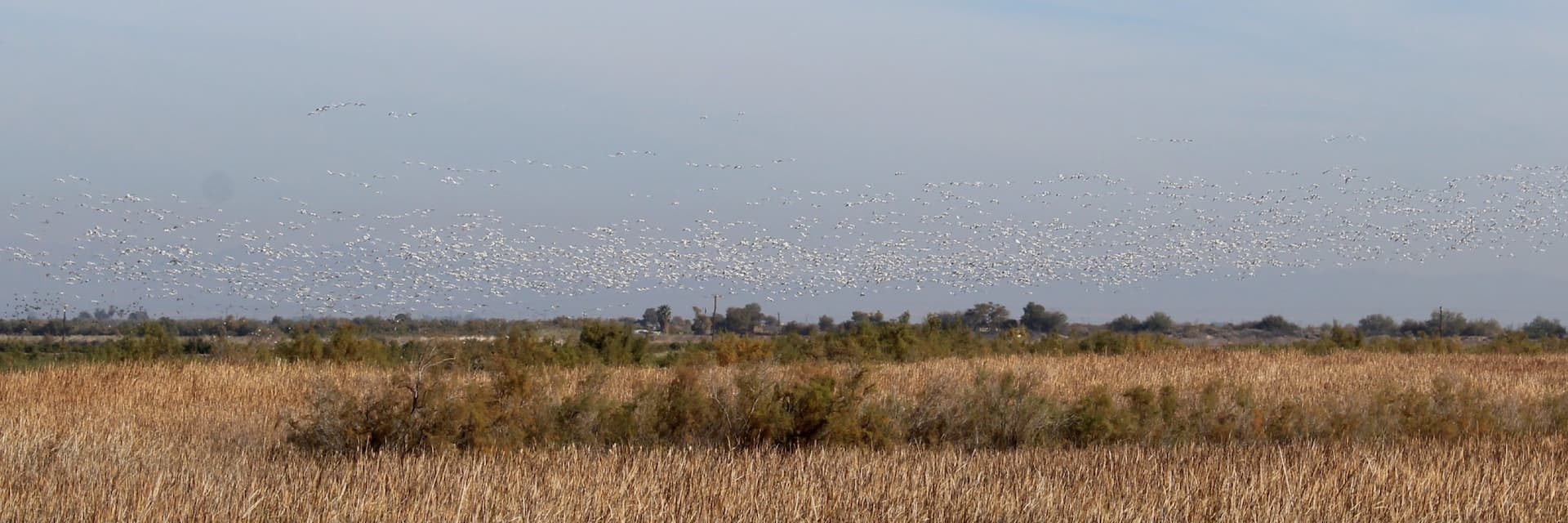
I also took trips to the Salton Sea which is a major wildlife sanctuary for migrating birds located in the middle of the desert. I saw huge flocks of waterfowl including hundreds of Snow Geese. There I started trying to photograph more birds which really helps capture more of the memories of birding and helped me learn more about photography. However, a 55mm lense isn’t enough zoom for wildlife so my family generously got me a 250mm lense for Christmas. With that lense I was able to get much better photos and even ID species I couldn’t ID in the field adding a new dimension to birding.
USA Stats:
- Species: 137
- Checklists: 65
- States: 4
2019 Summary
I greatly enjoyed birding though our big year of travel. It’s added lots of great memories to what were already fun trips. I kept birding into December as I stretched to see how many species I could ID in a year. The last new species I identified in 2019 was the majestic Great Horned Owl, using sound to ID a male/female pair. I was excited to have been able to achieve the milestone of seeing a new bird for every day of the year. Wrapping up the last evening of birding with a new bird ID’d by sound was a poetic way to finish my year of 367 species. It also foreshadowed one of the ways I would improve my birding in 2020.
2019 Stats
- Species: 367
- Checklists: 223
- Countries:
Responses
See how to respond...
Respond via email
If you'd prefer to message me directly, send an email. If you'd also like your message to be visible on the site I can add it as a comment.
Reply via Email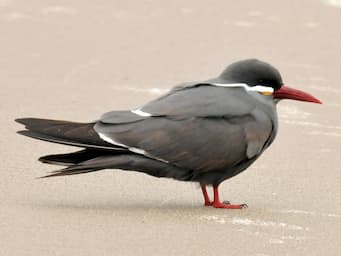
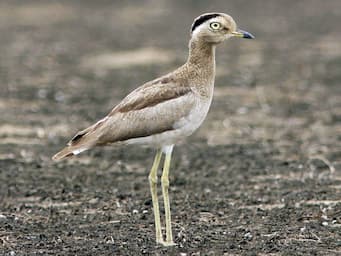
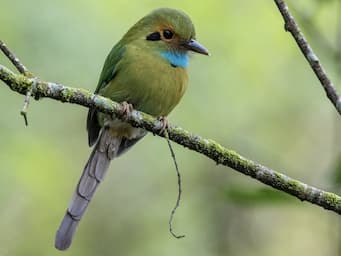
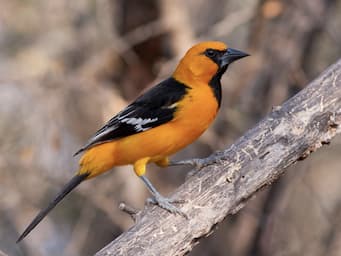

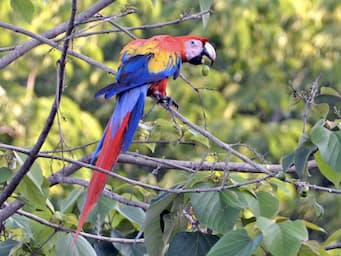
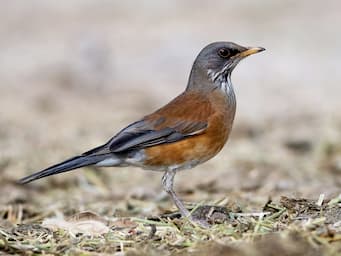
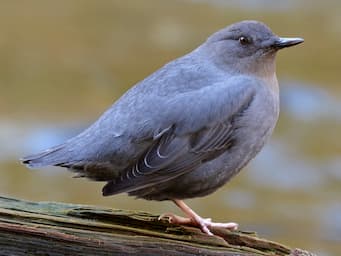
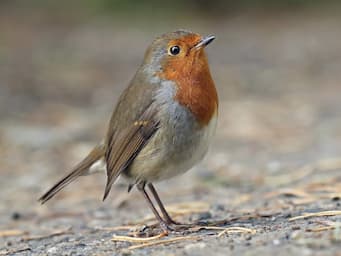
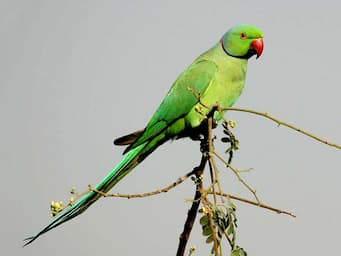
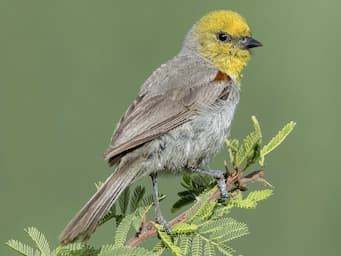
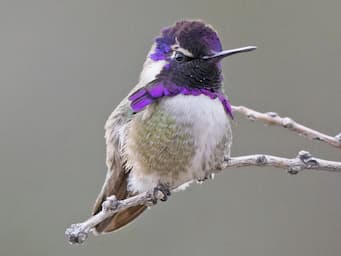
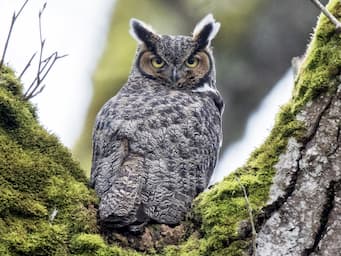
Respond from another site
Responses are collected from posts on other sites. Have you posted somewhere that links to this page? If so, share the link!